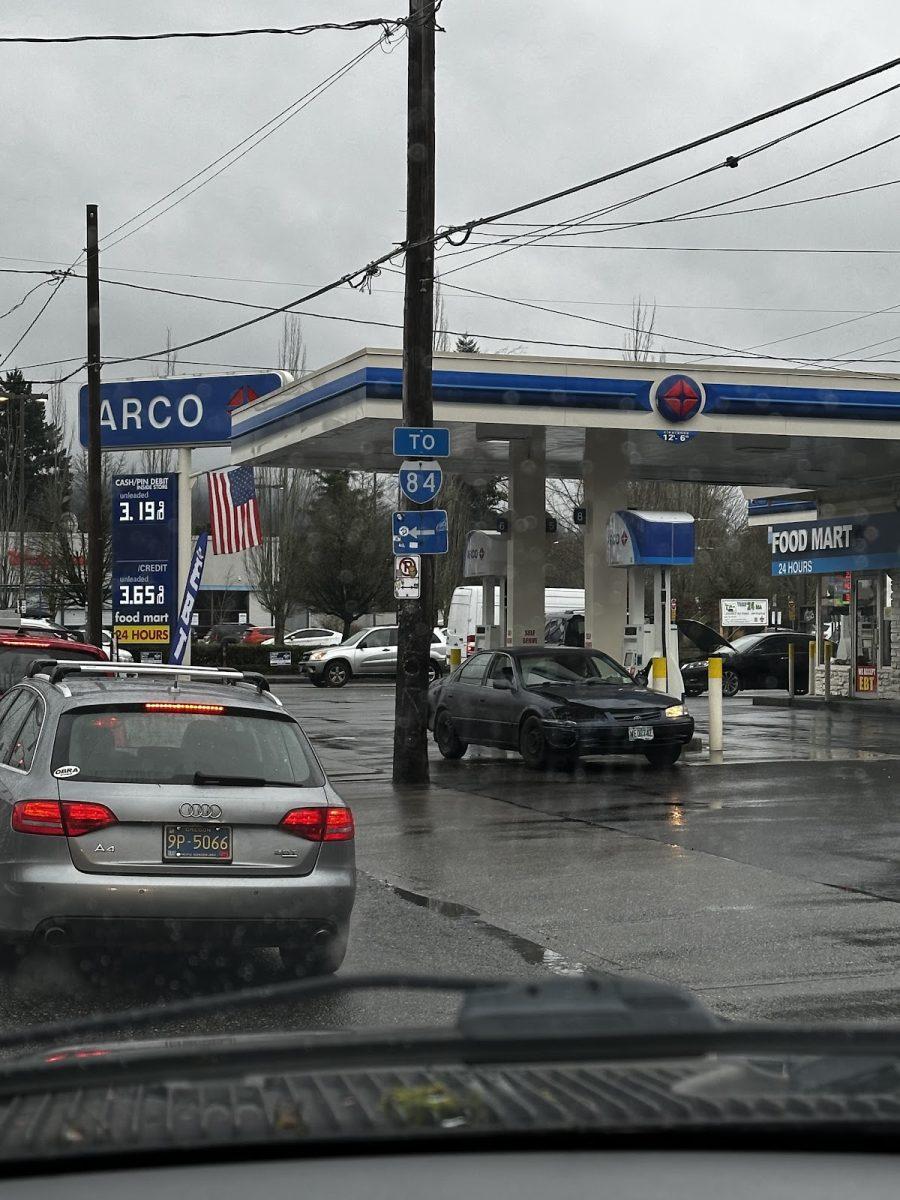Drivers in the United States (U.S.) face the challenge of paying absurd amounts of money for gas, which was heightened significantly during the peak of the COVID-19 pandemic. The main reasons that lead to these spikes in prices are the effects of politics and location.
The Organization of Petroleum Exporting Countries (OPEC) plays a large role in the pricing of oil worldwide, influencing even non-OPEC countries to price their oil accordingly for convenience. The worldwide pull-back of Russian exports, due to the ongoing conflict with Ukraine, has raised gas and oil prices globally. This means that countries that trade goods with Russia have stopped all exports and imports, severely impacting the world as Russia is the third largest producer of oil. David Marsh, a social studies teacher at Franklin High School (FHS), shared some information on how the pricing of gas and oil works. “It has increased the price of gas on the whole due to demand remaining the same but supply decreasing,” Marsh explained. Though, the supply and demand for oil is not the only factor that can spike prices.
Americans are looking towards electing a new president by the end of 2024, which will impact fuel prices depending on which strategy the newly-elected president chooses to take. One possible approach is for the U.S. government to drill for more oil to increase production. However, this method could take years to noticeably affect the price of gas due to the time consuming process of oil drilling, according to Marsh. On the other hand, “I expect the Biden campaign to be pushing green alternatives which would lower the price of gas over time as the demand goes down while also being better for the environment,” said Marsh.
Sidney Whitehead, a jewelry packing assistant and FHS senior, has been affected by the high gas prices over the past few years. “[I pay] around $90 for a full tank,” they said. Fortunately, his daily life is not significantly affected by the cost of gas: “I’m lucky to live with parents who have stable income, but it’s making it hard to save for college.” Nevertheless, this is not the case for everyone.
“Most of my paychecks go to the gas I put in my car; that’s how most of us are out here: living paycheck to paycheck,” explained an anonymous person pumping gas at Chevron. The lower class and majority of the middle class of the U.S. live this way — paycheck to paycheck — especially with the rise of gas prices.
Gas prices in the U.S. have a natural flow of fluctuation. Prices will peak during the late summer time when people are driving more, therefore increasing the demand for oil. Another factor that contributes to Americans spending more at the pump, is the taxes on gas itself. Effective in the new year, Oregonians will have to pay $0.40 per gallon in taxes, adding more layers to the unseen struggle for gas that most of the U.S. faces.
Across the country, there is an average of $0.57 per gallon taxed, according to the Department of Energy. However, the price of gas can be determined differently by each gas station. “Most businesses have the right under state and federal law to set their own prices,” explained a Consumer Service Representative for Phillips 66 Company. “Each station’s fixed and variable operating costs play a part in the amount a station charges for gasoline. Because economics vary from station to station, the consumer will often see different prices for gasoline,” the Phillips 66 Company Representative continued.
The price of fuel tends to lower when the fall season starts. The reasoning behind this is due to the lower demand after the last event in the summer season: Labor Day. According to the website Money.com, gas switches from summer-grade to winter-grade fuel when fall begins in late September. Summer-grade fuel has a lower volatility than the winter alternative; this is to limit the evaporation rates that are caused by warmer weather. The winter-grade fuel is usually cheaper than the summer-grade, therefore lowering the overall price at the pump. The next time you fill up your tank, make sure to consider the many factors that contribute to the price you’re paying and how it affects everyone differently.


































